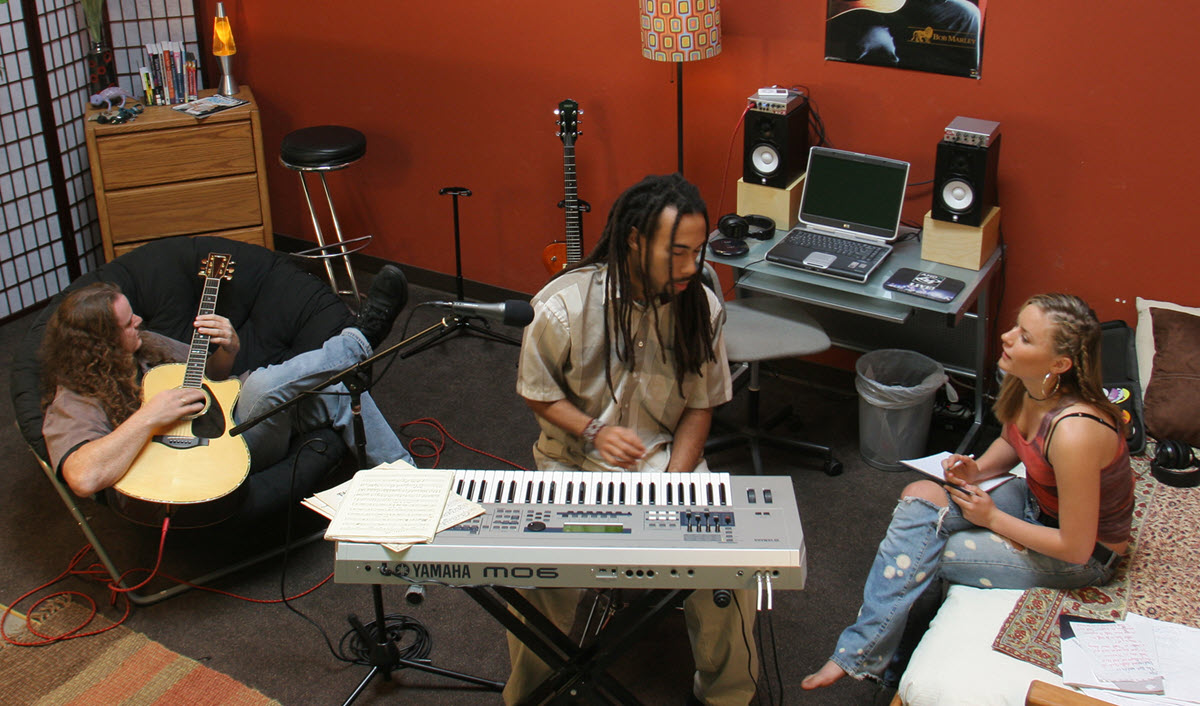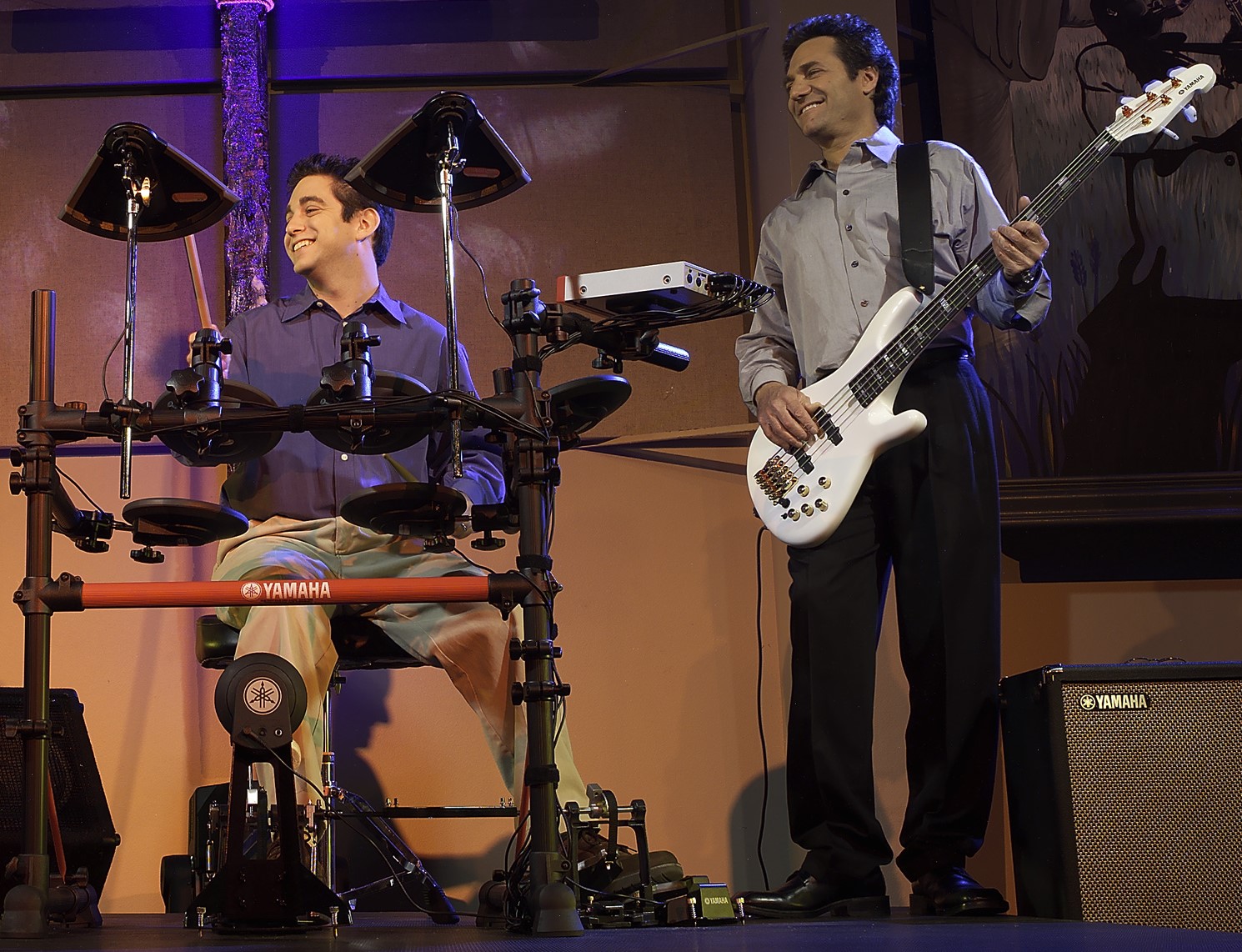How to Rehearse More Productively with Your Band
Maximize the efficiency of your band rehearsals.
Most musicians spend a lot more time rehearsing than they do performing. But outside of structured ensembles like orchestras or marching bands, rehearsals are often unscripted and disorganized and don’t accomplish nearly as much as they could. It’s too bad because, with a bit of forethought and organization, your group can rehearse much more effectively. Here are five tips for improving efficiency.
1. Have a Plan
Every musical situation is different, but the goal of virtually any rehearsal is either to learn new material or to tighten existing repertoire through repetition. Often, it’s a little of both.
Whatever you aim to do, planning an agenda for what you want to accomplish in a given day is useful. The responsibility for organizing a rehearsal to-do list will depend on the band’s structure. If you’re being hired as a side player or background vocalist by a singer or band leader, that person will usually run the rehearsal or have a musical director (MD) who does.
But if you’re in a band where everyone is on an equal footing, you might want to appoint one of you to be MD to help your rehearsals stay on point. That person should take the lead in planning. This will entail reaching out to the other musicians and singers to discuss what new songs to learn, as well as creating set lists for upcoming shows.
If you’re learning a new song and there are existing recordings, the MD should send everyone an MP3 or link so they can listen to the music before the rehearsal. The MD should also create a basic lead sheet for each new song with the chords and lyrics included.

These charts can feature written-out parts if the band members are comfortable reading music. If not, a simple chord chart or even just lyric sheets with the chords written above the words can be effective as a reference for the band members at rehearsal.
Give everyone at least a week to listen and start figuring out and learning parts before trying to rehearse a new song. Hopefully, every band member will commit to spending enough time in advance to familiarize themselves with the material. At this early juncture, it’s essential to ascertain if the lead vocalist is comfortable with the key. Changing it before the full band starts rehearsing will be less disruptive than if you wait until everyone’s learned their parts.
2. Be Ready for the Downbeat
Especially in a part-time band where most musicians work or attend school during the day, your rehearsal time may be limited to a few hours in the evening or on weekends. To maximize productivity, you don’t want to waste that relatively narrow window.
To help things move along at an efficient pace, set a start time for the “downbeat,” the first note of the first song. Assuming you’re rehearsing in someone’s house rather than a paid rehearsal space, band members should arrive before the downbeat to get set up, tuned up, warmed up and ready to go.

Otherwise, even if all of you arrive punctually, you may lose 10 or 15 minutes of valuable time until everyone is ready. If you’re renting a rehearsal studio, you likely can’t get in early, but make sure everyone is there and waiting before the start of the time you’ve reserved.
3. Polish the Groove
When working on a new song, you’d typically start by playing a recording of it (assuming one exists) and then trying a run-through. This initial attempt will show which song parts need the most work and allow band members to voice ideas about specific aspects of their parts or the arrangement.
For listening to these recordings, it’s helpful if someone brings a Bluetooth® speaker like the Yamaha WS-B1A so you can play the reference songs from your phone. Trust me, it will sound much better than putting your phone up to a microphone!

After all the band members work their way through the initial attempt at the song, try temporarily breaking it down into component parts to clearly hear what’s going on. For example, focus first on the rhythm section grooves for the various song parts.
Listening to just the bass and drums, or the bass, drums and rhythm instruments (typically keyboard and guitar) can often be quite revealing. Is the bass part locking in with the kick drum? Are the rhythm guitars accentuating or fighting the bass and drums, or perhaps they’re too busy? You can hear the song’s foundation more clearly by temporarily playing it through without the vocals or lead instruments. Then bring those parts back and see if that made a difference.

Vocalists can implement a similar process by running through their harmonies without the instruments. Some common problems to look for are parts that overlap on specific notes or create intervals that don’t match the chords in the song (for example, a harmony part that adds a major third to a minor chord).
The vocal parts will also sound a lot tighter if the singers release their notes — especially held notes — at the end of a line, at the same time. This can take quite a bit of practice and generally requires that the singers watch each other’s lips or hand gestures carefully.
Often there will be disagreements over arrangement issues, whether instrumental or vocal. For example, say one person wants to add a stop at the end of the bridge, and someone else wants it to transition smoothly into the next section. The best way to resolve such disputes is to play the section both ways to compare. Usually, the issue will resolve itself because one way will sound better in comparison. If you still need to, you can vote on it or devise another conflict-resolution method.
4. Hit That Record Button
Frequently, song arrangements and individual parts get changed during rehearsal. If you have an MD, they can keep track of those changes so they’re not forgotten before the next rehearsal. Another way to ensure that changes get remembered is to record your rehearsals. Even if it’s just a mono recording made on a mobile phone, it will help you all remember the ideas and arrangement changes you came up with during the rehearsal.

The other advantage of recording rehearsals is that band members can practice with the recordings at home between rehearsals. You don’t necessarily have to record the entire rehearsal, but once you’ve worked out the arrangement on a song, record yourselves playing it all the way through. Whoever makes the recordings should share them with the other band members the next day so that everyone has them to practice with before the next rehearsal.
5. Take a Break!
Just like at a gig, musicians do better when they get occasional breaks. Plan on one or two short breaks — five minutes or so — during each rehearsal. That will allow everyone to relax briefly, return calls or texts, refill their water bottles or hit the bathroom.
Band members should also be encouraged to stay off their phones at rehearsals except during the breaks, as it’s distracting for everyone. That said, unless you’re hiring musicians to rehearse with you, it’s unlikely you’ll be able to enforce a 100-percent phone ban. Still, if everyone knows that phone use is frowned upon, you should be able to keep it to a minimum.
Finally, remember that guidelines such as these will only work if they have buy-in from the band members … though it’s hard to imagine why anyone would object to adding structure to the rehearsal process. If a group member doesn’t want to make that commitment, perhaps they’re not the right person for the gig. In any musical group, attitude can be important as ability. Time to start rehearsing!















